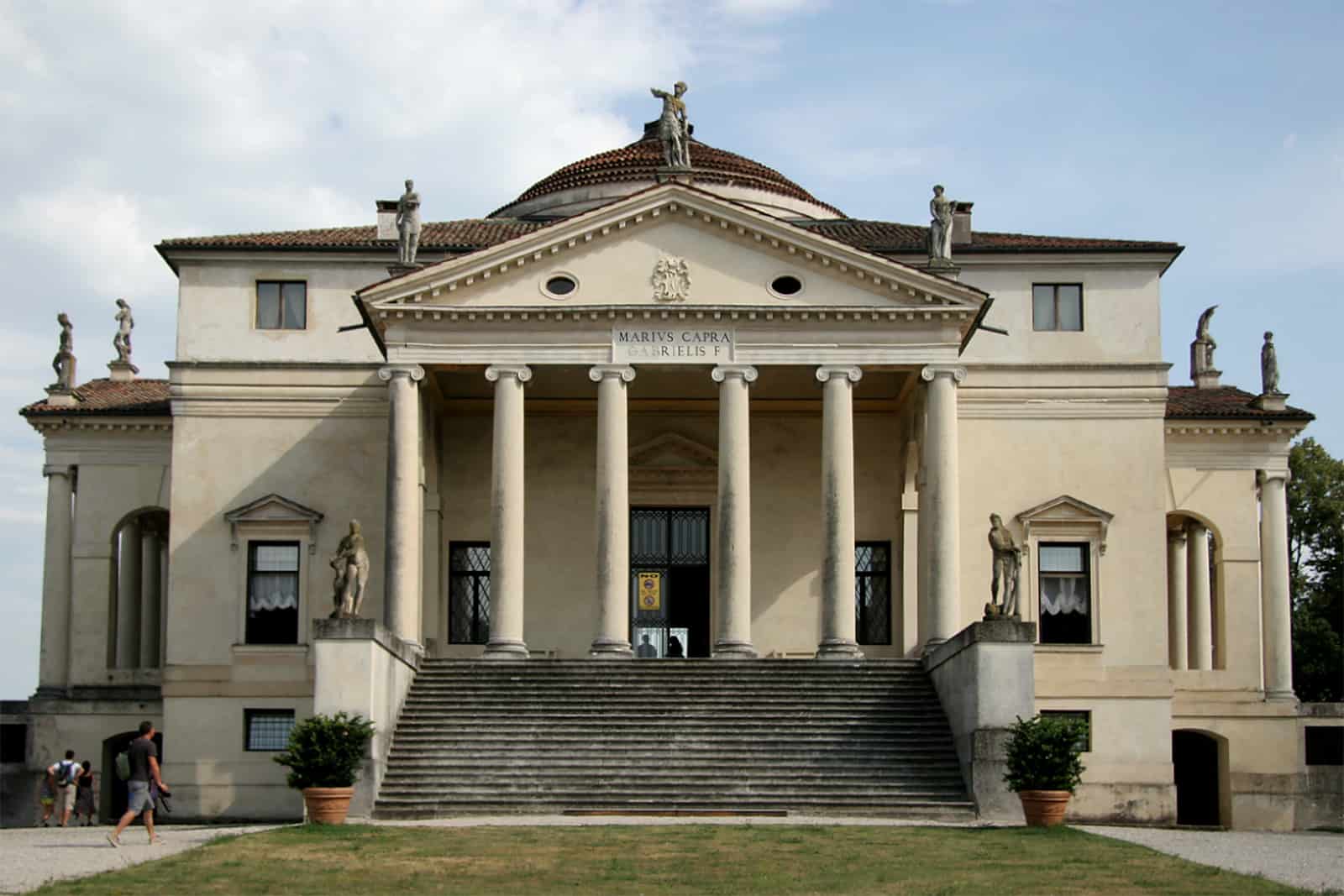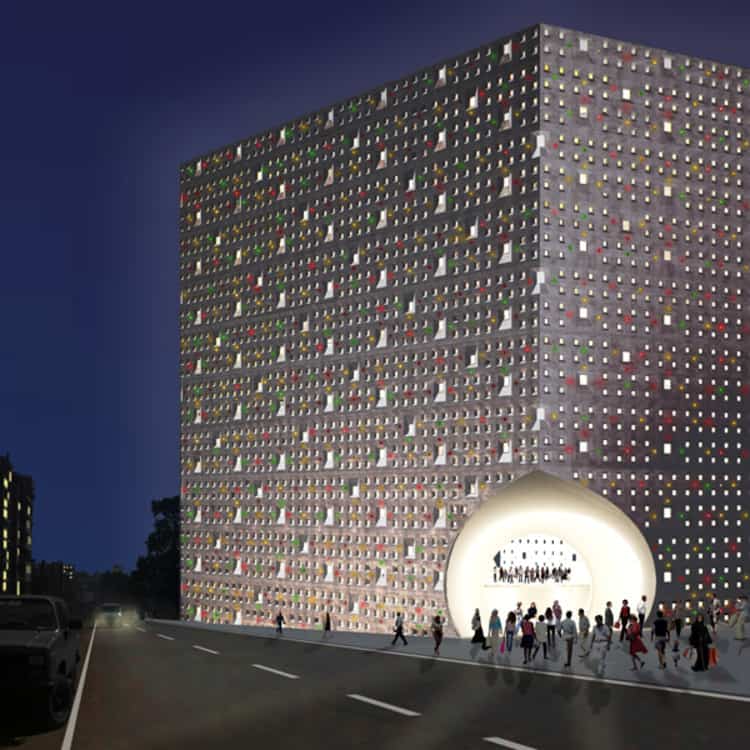All buildings are built using mathematics, a fact which is well known by engineers, architects and builders, but is less talked about by the people who live and work in these structures. If you climb the Shard in London, you are more likely to be looking at the views than thinking about the mathematical principals which stop it collapsing. Some architects go one step further and choose to make mathematics the central theme of their design, obvious for everyone to see. These wondrous maths structures have a story to tell, and here are some of the most interesting ones.
Effekt bridge – Denmark
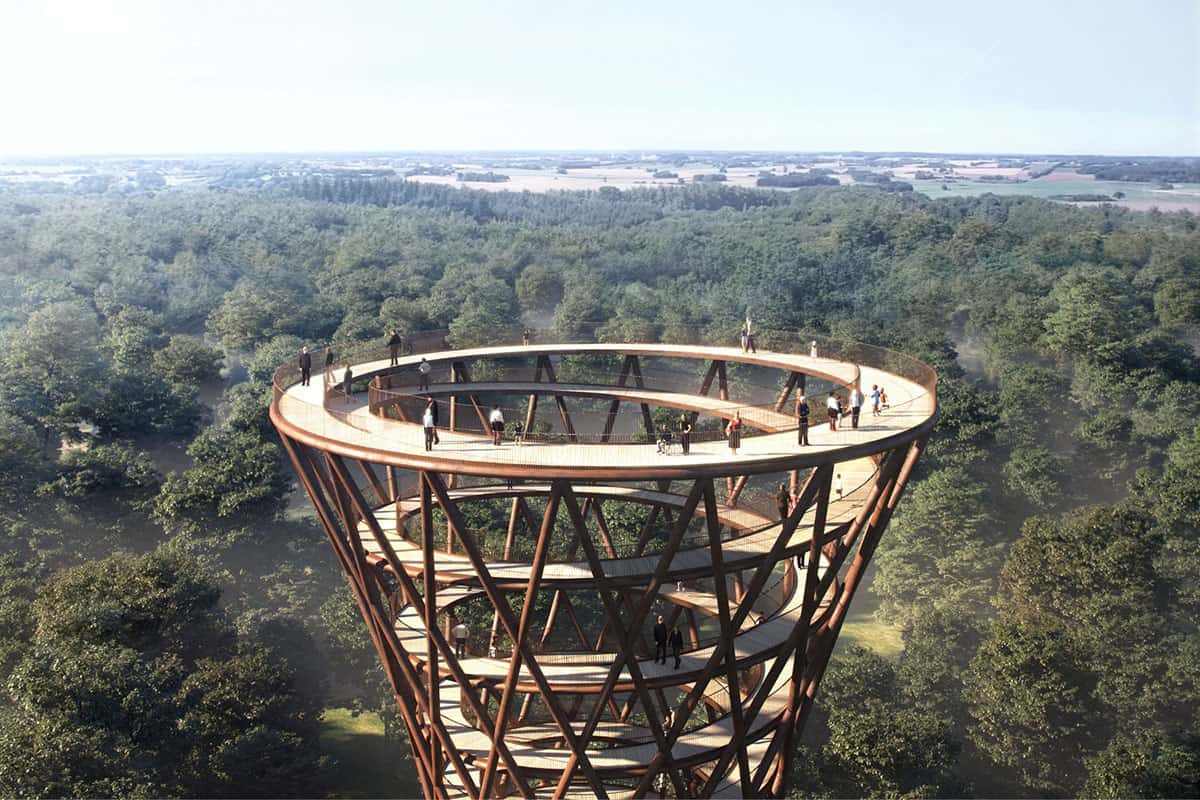
This Danish bridge was built so that visitors could observe nature without disturbing the natural environment and is based on a spiral around a hyperboloid. A hyperboloid is a 3D shape which is formed when a hyperbola is rotated around an axis.
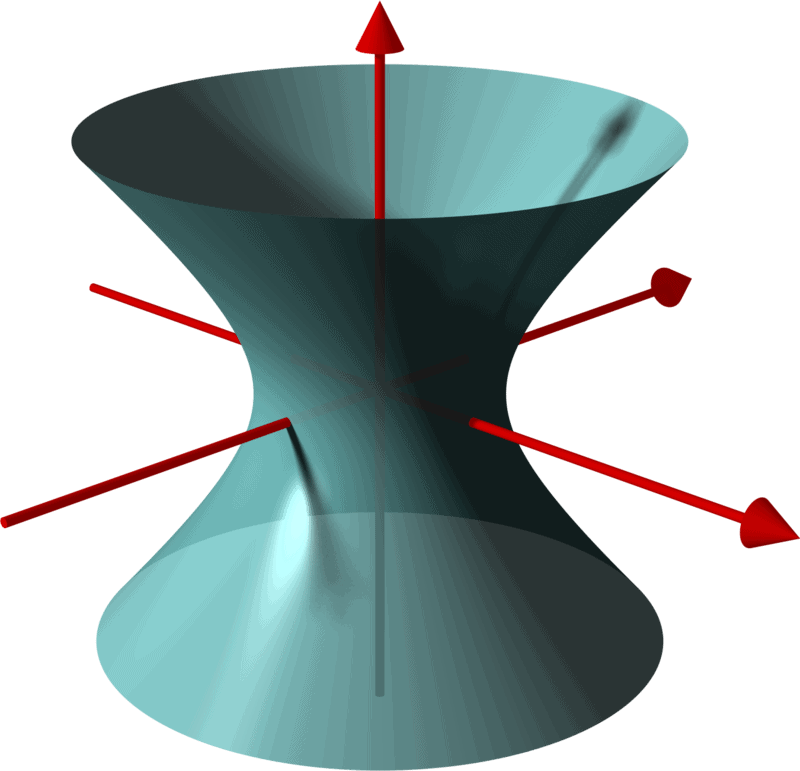
Beijing National Aquatics Center, China
The Beijing National Aquatics Center was built for the 2008 Olympic games in China. The surface of the building is based on the Weaire-Phelan structure which is a type of bubble foam which uses bubbles of equal volume, while maintaining the smallest surface area between them. The Weaire-Phelan structure is made up of two different types of ‘bubbles’, each with equal volume. The first is an irregular dodecahedron and the second is a 3D shape called a tetrakaidekahedron which has two hexagonal and 12 pentagonal faces.
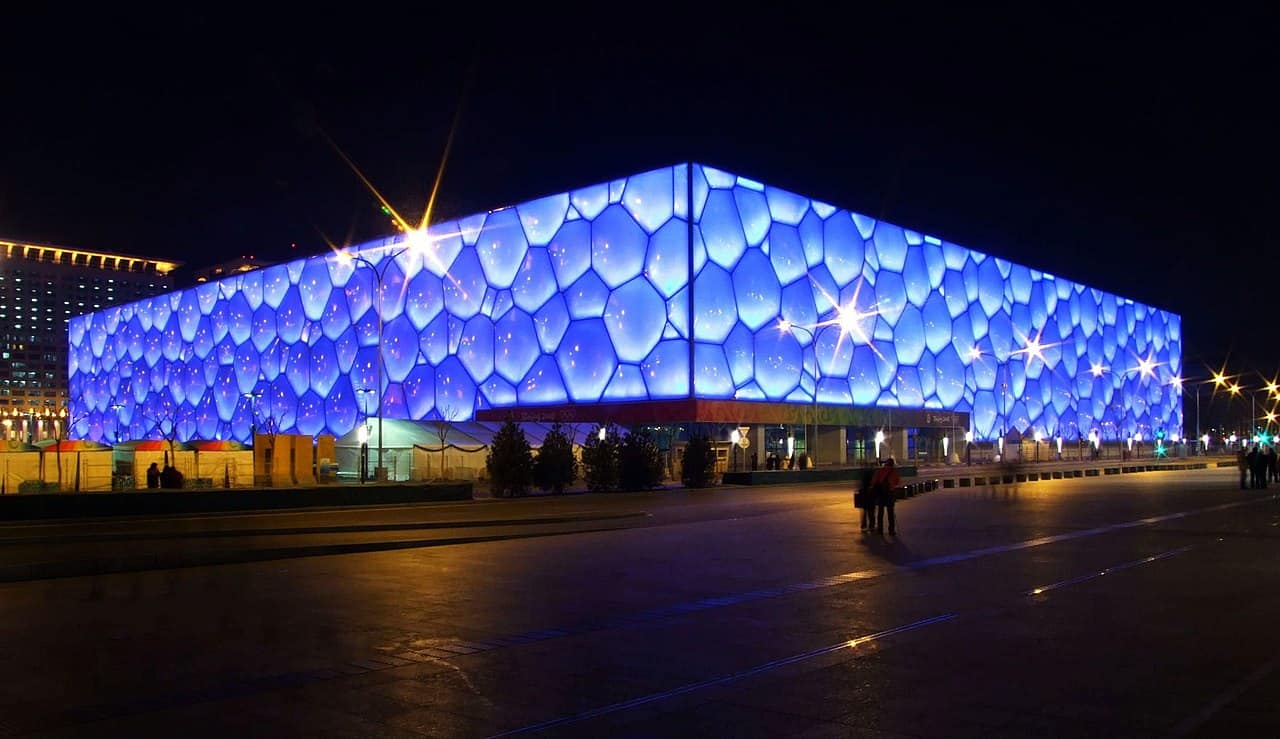
Lideta Mercato, Ethiopia
The Lideta Mercato in Ethiopia is a shopping mall with a difference – it has been designed to fit in with the hot climate of Addis Ababa, using natural ventilation and lighting, and is very different to the standard glass shopping malls which often overheat in hot countries.
The pattern of the windows is based on the designs which can be found in traditional Ethiopian dress, and if you look closely, these are also drawn from mathematical fractal designs. Fractals are shapes which have self similarity – meaning that when you zoom in you can often see a repetition of the whole picture. The architect for this project based this design idea on the work of mathematician Ron Eglash who has written a book on the use of fractal design in African culture.
Former Markham Moor Little Chef, UK
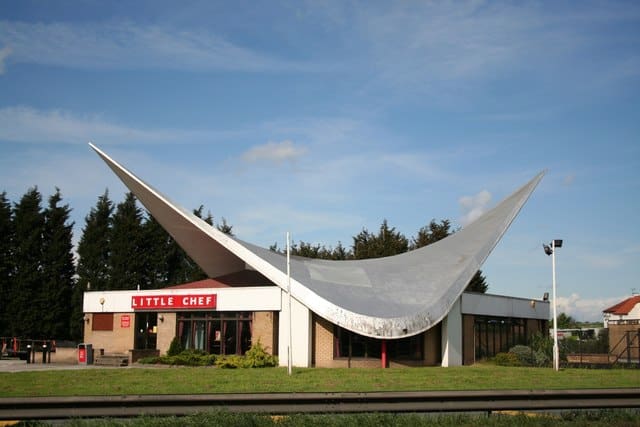
This restaurant was once described by The Guardian newspaper as ‘Britain’s only architecturally important Little Chef’ – it is Grade 2 listed and at the time of writing has recently become a Starbucks. Its roof is a hyperbolic paraboloid – Pringle Crisps are also based on this shape. It is certainly a grand design for a motorway service station – make sure that you call in next time you are driving along the A1.
Every point on a Hyperbolic Parabaloid lies on two straight lines (see diagram below) which means that it is called a ‘doubly ruled’ surface. This property means that a Hyperbolic Parabaloid can be constructed using straight pieces of steel before being clad. This shape can also be stronger than a conventional flat roof.

Tycho Brahe Planetarium, Denmark
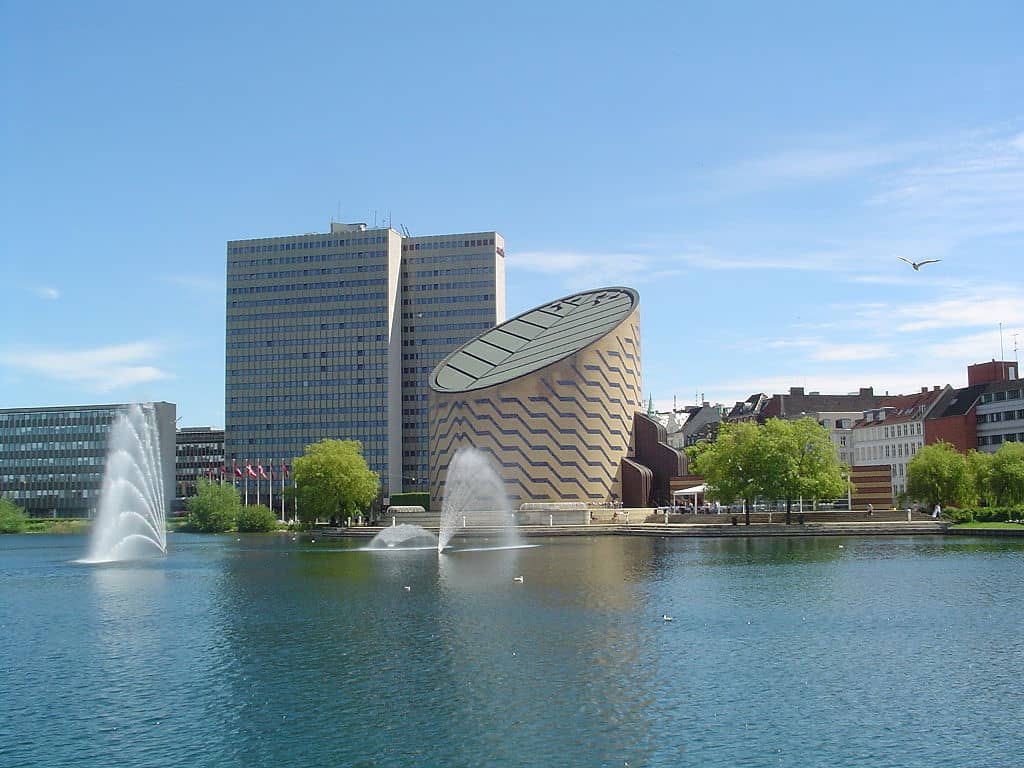
If you slice a cylinder at an angle then you will produce an ellipse. This is a type of ‘cylindric section’ which is similar to the famous ‘conic sections’ where a cone is sliced to produce different mathematical shapes including the ellipse.
The Tycho Brahe Planetarium in Copenhagen is one giant cylindric section and is named after the important 16th Century Astronomer Tycho Brahe. Interestingly, Tycho Brahe lost part of his nose in a drunken duel with a cousin to decide who was the most superior mathematician. As a result of this, Brahe wore an artificial brass or ‘golden’ nose.
In an episode of Who Do You Think You Are? it was also revealed that actor Dame Judi Dench is related to Tycho Brahe.
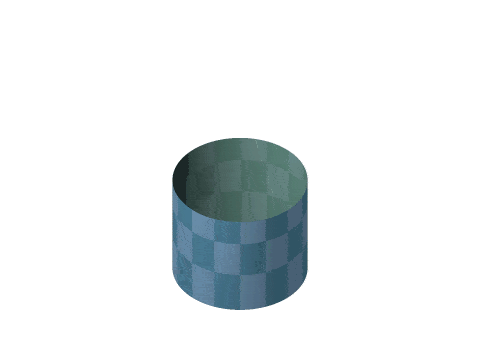
Villa La Rotonda, Italy
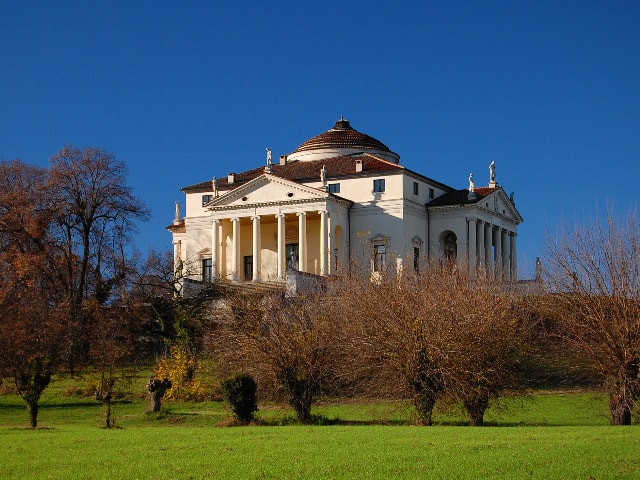
The Villa La Rotunda is an exceptionally symmetrical building, with four lines of symmetry and four porticos, with one on each façade. (Imagine having four entrances to your house!) The whole of the building is inscribed inside an imaginary circle, and symmetry is found throughout the building.
The Villa La Rotunda was designed by Andrea Palladio (born 1508), an architect who based his designs on harmonious mathematical proportions and symmetry, making sure that the proportions of each room followed exact ratios such as 3:4. Andrea Palladio is considered to be one of the most influential architects who has ever lived and his designs have been copied throughout the world – even the White House was inspired by Palladian architecture.
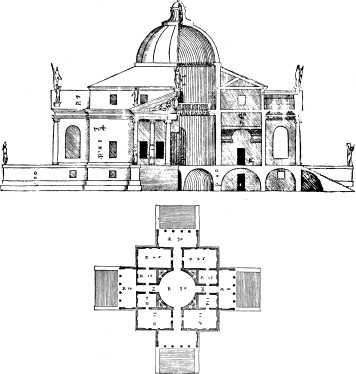
The Core Building at the Eden Project, Cornwall, UK
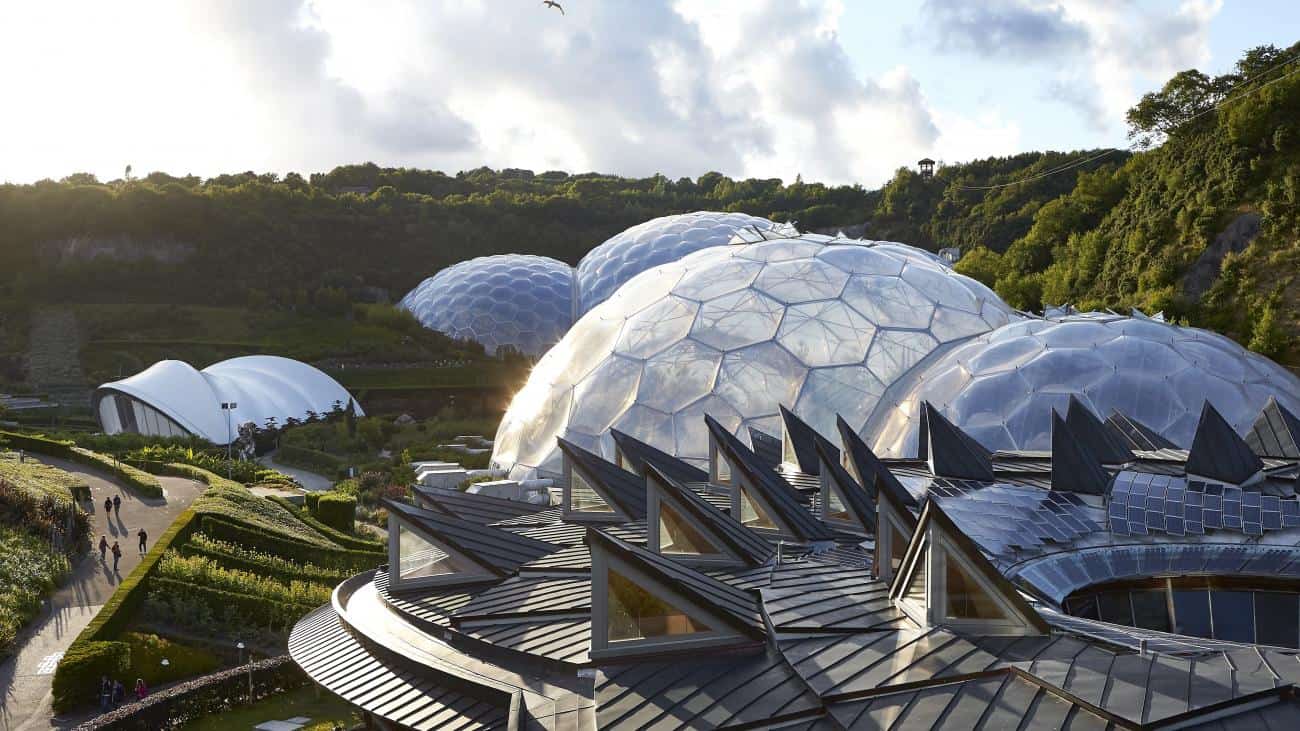
Situated next to the famous Biome buildings, the Core building is based on Fibonacci spirals. In the Fibonacci sequence 0, 1, 1, 2, 3, 5, 8, 13, 21, 34, … each number is formed by adding up the two previous numbers, for example: 3+5=8. Amazingly, this sequence is found in many places in the natural world, including in pinecones and seed heads. This is why there is a sculpture at the heart of the building called the Seed which is based on a pinecone. If you count the clockwise and anticlockwise spirals on a pinecone then your result will usually be two consecutive numbers in the Fibonacci sequence, and the same is normally true of a sunflower seed head.
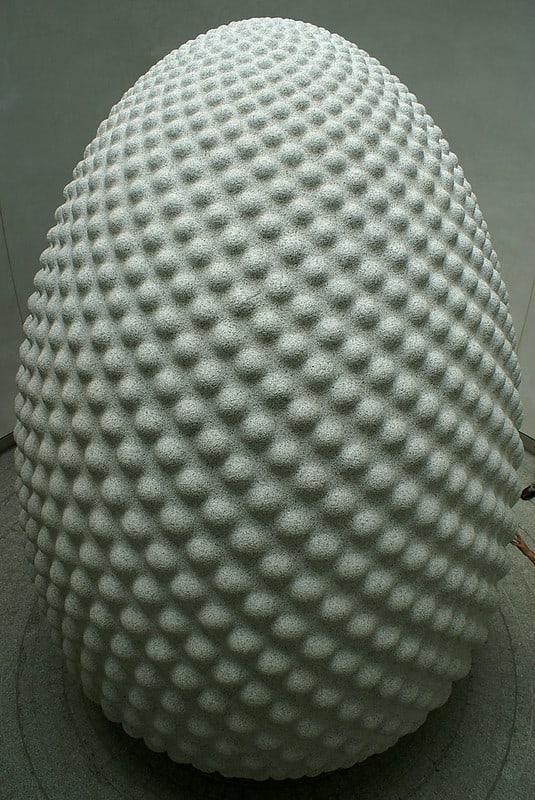
The Sage Music Centre, Gateshead, UK
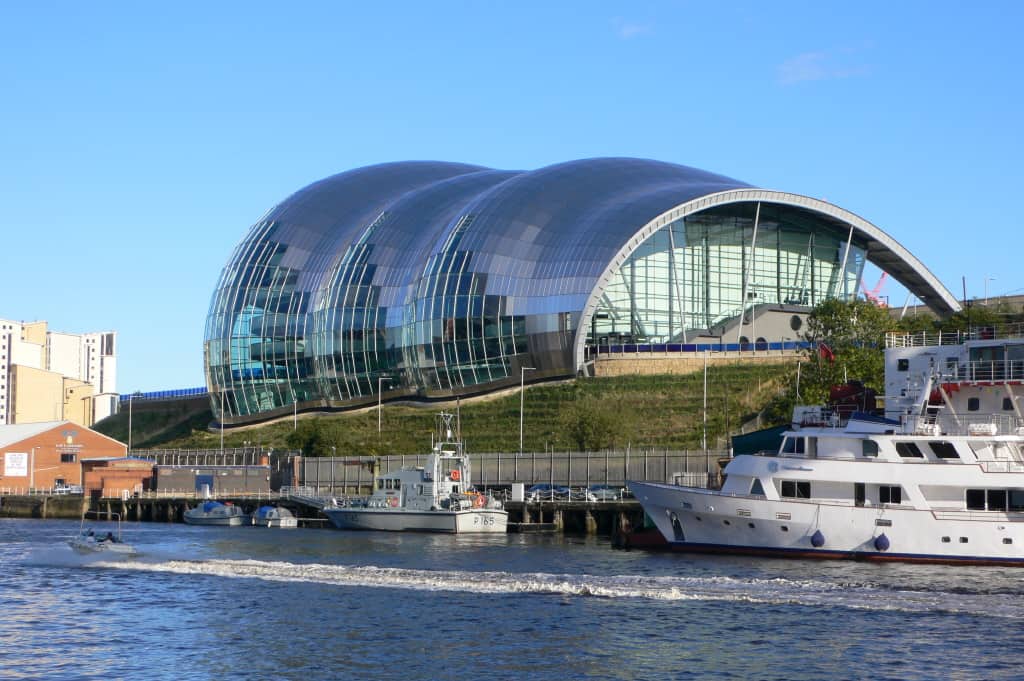
The Sage Music Centre is made up of 27 interconnected pieces of a torus. A torus is the mathematical name for a doughnut, and was chosen by the architects as it has several special properties which make construction easier. One of these is that it can be approximately tiled with rectangular tiles without the need for any sharp edges or corners. The architect – Foster and Partners has used a torus in several of its other designs, such as in the Elephant House in Copenhagen.

Grand National Rollercoaster, Blackpool Pleasure Beach
This Grade II listed wooden rollercoaster was built in 1935 and is constructed from a Möbius Strip – in fact it is one of only three wooden Mobius Strip rollercoasters worldwide. A Möbius Strip is a special mathematical shape which can be made easily at home – simply take a strip of paper, give it one twist and then attach the ends together. The resulting shape will only have one surface – run your finger along it and you will be able to touch both sides of your paper, it is a one-sided shape! It is difficult to tell that the rollercoaster is a Möbius Strip just by looking at photos of it. For a more detailed explanation take a look at this blog article by writer Rob Eastaway.
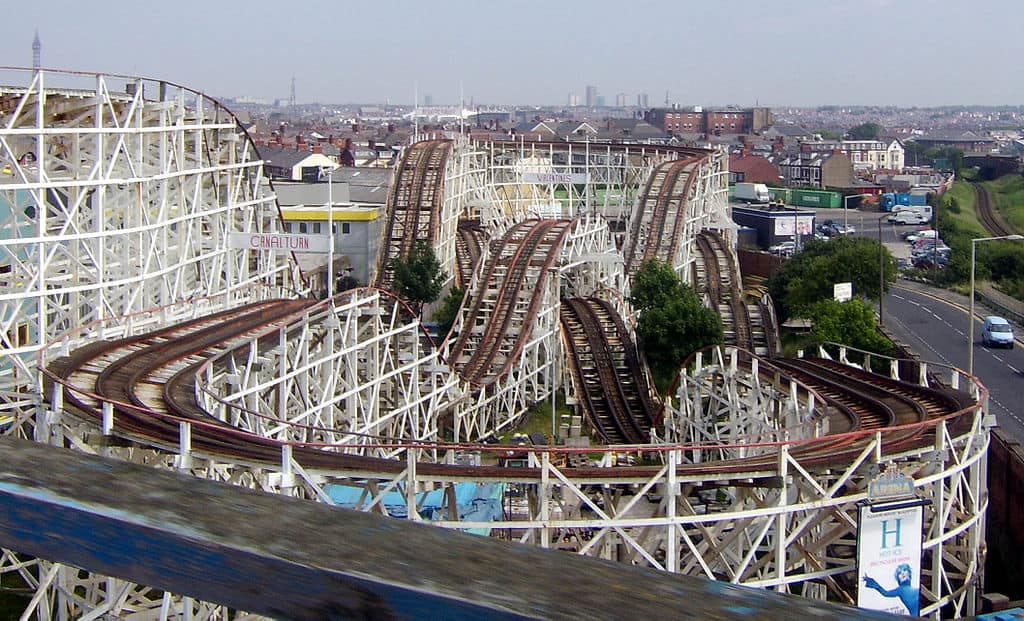
La Grande Arche de la Défense, Paris, France
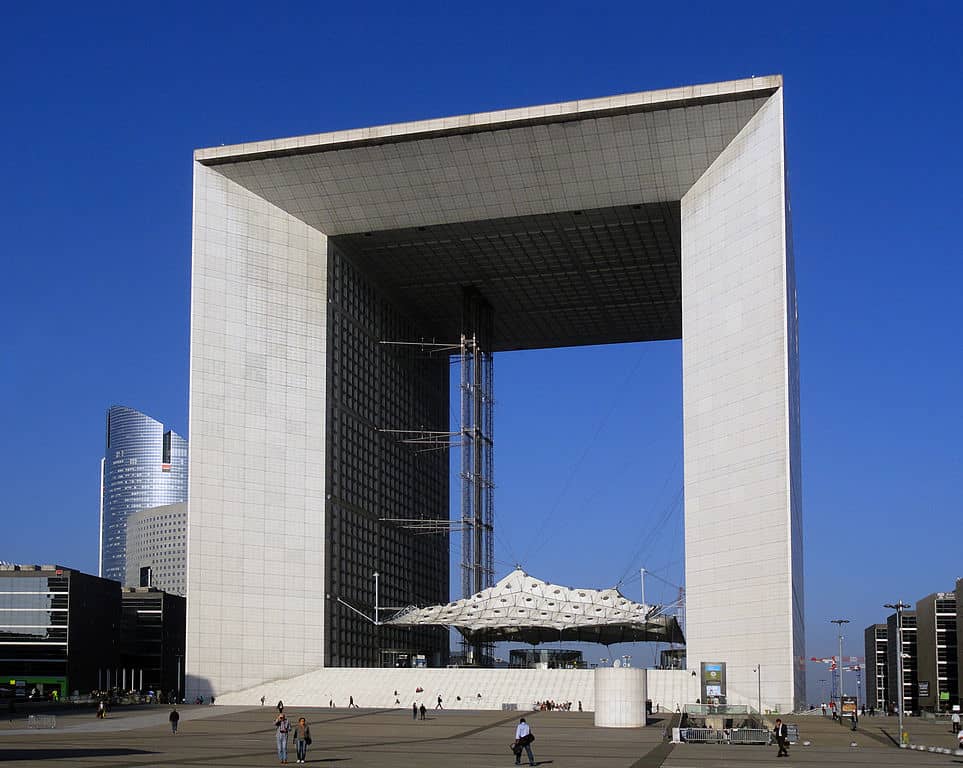
If you climb to the top of the Grande Arche de la Défense you will have a clear view of the famous Arc de Triomphe which lies 4km away in the centre of Paris, and in many ways, La Grande Arche is a modern reflection of this other famous landmark. Surprisingly, La Grande Arche is also a representation of a 4-dimensional cube, projected onto a 3 dimensional world. The 4d ‘hypercube’ is called a ‘Tesseract’ – in fact mathematicians are able talk about cubes in any dimension, calling them n-cubes. Unfortunately, humans are stuck with living and working in 3 dimensions, which means that we need to see the hypercube projected onto 3d space to get a proper look at it. Next time you visit Paris, make sure you head over to visit La Grande Arche – the biggest piece of mathematics in Paris (probably).
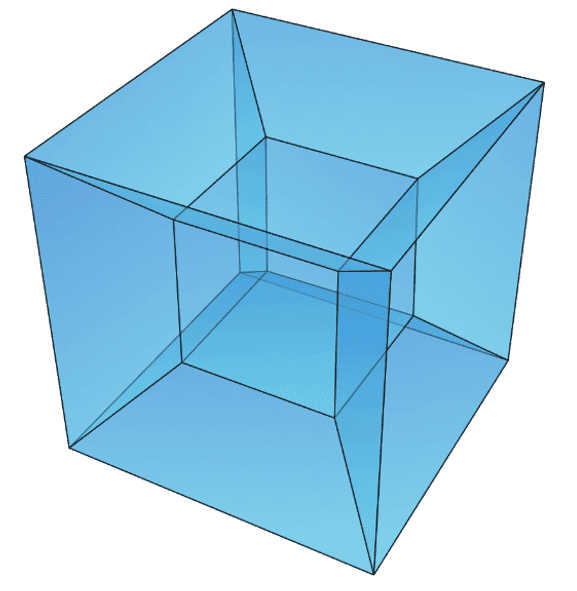
Article by Hazel Lewis
Image Credits
Featured Image Quinok, CC BY-SA 4.0, via Wikimedia Commons
Marco Bagarella, CC BY-SA 3.0, via Wikimedia Commons
Andrea Palladio (1508-1580), Public domain, via Wikimedia Commons
Little Chef Image via Richard Croft Creative Commons Licence.
“Seed @ Eden” (CC BY-NC-SA 2.0) by Ennor
Leonid_2, CC BY-SA 3.0 <https://creativecommons.org/licenses/by-sa/3.0>, via Wikimedia Commons
WillMcC at the English-language Wikipedia, CC BY-SA 3.0, via Wikimedia Commons


